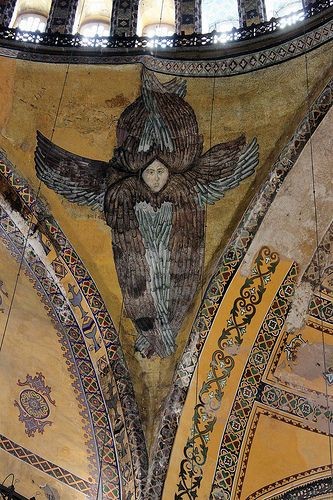#Orthodox Christianity
Explore tagged Tumblr posts
Text


'The Annunciation; details' by Mikhail Nesterov
2K notes
·
View notes
Text







Cell phone snapshots, two years ago today in Bukovina
Voroneț and Humor Monasteries, 10 April 2023
115 notes
·
View notes
Text



#orthodox christianity#church#cottagecore#naturecore#fairycore#cottage aesthetic#nature aesthetic#fairy aesthetic#nature#landscape#photography#fairy tale aesthetic#forest aesthetic#aesthetic#dark academia#architecture#light academia#dreamy#rural#village#autumn#water#lake#river
307 notes
·
View notes
Text



Remaining christian icons in Hagia Sophia, an Orthodox church turned to a mosque after Ottomans took Constantinopole, todays Istanbul. If it remained a church today, it would be the biggest Orthodox Christian church in the world.
#orthodoxy#orthodox christianity#orthodox#christianity#eastern orthodoxy#eastern orthodox#orthodox christian#orthodox church#church
365 notes
·
View notes
Text

#summer#church#orthodox christianity#cottagecore#moodboard#aesthetic#autumn aesthetic#fall aesthetic#cozycore#warmcore#warm aesthetic#cosycore#chaotic academia#dark academia#light aesthetic#light academia#cozy aesthetic#cosy academia#autumn#fall#photography#dreamy#naturecore#cottage aesthetic#nature aesthetic#autumn moodboard#fall moodboard#studyblr#foodcore#romantic academia
6K notes
·
View notes
Text
Tomorrow (or today, if you're reading this 30 minutes after this is posted) will be the funeral of a very dear friend, the joy of my heart. If you could pray for her repose, and for the consolation of her parents and brother and friends, I would really appreciate it.
230 notes
·
View notes
Text

2K notes
·
View notes
Text
We are all children of the same Father; we are all one. And so, when we pray for others, we say, 'Lord, Jesus Christ, have mercy on me,' and not, 'have mercy on them. ' In this way we make them one with ourselves.
Saint Porphyrios
83 notes
·
View notes
Text



The Leper King's Personal Struggles
Baldwin IV of Jerusalem, remembered by history as the Leper King, ruled from 1174 to 1185 AD. His reign was defined not only by external threats from the Muslim world but by an internal war, one that ravaged his flesh and sought to break his spirit. Diagnosed with leprosy at a young age, Baldwin's journey to the throne and beyond is a study in endurance, dignity, and the kind of strength the world cannot always see.
Baldwin's Early Life
Born in 1161 to King Amalric I and Queen Agnes of Courtenay, Baldwin was raised with the expectations of nobility and the education befitting a future leader. His tutor, the archbishop and chronicler William of Tyre, soon noticed something strange about the young prince. During play, Baldwin would laugh when the other boys pinched or struck him—“he seemed not to feel pain like the others,” William noted. This lack of sensation, particularly in his right arm, led to the realization that Baldwin had contracted leprosy.
Though the disease was still in its early stages, the implications were clear: Baldwin would be disfigured, disabled, and in the eyes of many, unfit to rule. And yet, “his mind remained bright, his wit untouched, and his strength of will surpassed that of many healthy men,” William wrote. This diagnosis, rather than ending his royal prospects, became the crucible in which his reign was forged.
The Physical Toll
Leprosy in the medieval period was viewed not merely as a medical illness, but as a moral and spiritual sentence. Those afflicted were often shunned, forced to live in isolation, considered cursed or unclean. And yet Baldwin, rather than being hidden away, was crowned king at just thirteen years old following his father’s death. He took the throne not with the confidence of youth, but with the weight of suffering already pressing on his shoulders.
As the years passed, the disease took its toll. His fingers curled in, his limbs grew weak, and his face became marked by the scars of decay. By the end of his reign, he could no longer walk, ride, or even sit upright without assistance. Despite these limitations, Baldwin continued to lead. “He was carried on a litter to council meetings, eyes clear, voice firm,” one chronicler wrote. The body failed, but the king remained.
In 1177, at the Battle of Montgisard, Baldwin led his outnumbered forces against Saladin’s army. He had to be physically tied to his horse to remain mounted. Even so, he inspired his knights to victory in one of the most astonishing triumphs of the Crusader states. His mere presence rallied the troops. “They looked upon him and saw not disease, but valor.”
Political Challenges
Baldwin’s reign was far from peaceful. The nobility of Jerusalem was rife with factionalism, competing interests, and disloyalty. His illness only added to the political instability, as nobles speculated over the succession, fearing a power vacuum. Baldwin understood this well and worked tirelessly to manage the crisis.
Rather than cling desperately to his title, he acted with wisdom and selflessness. When he could no longer manage the full responsibilities of the crown, he appointed his young nephew Baldwin V as co-king and established a regency to preserve order. He disapproved of Guy of Lusignan, his sister’s husband, fearing his arrogance and ambition. Though pressured to accept him as heir, Baldwin’s discernment proved prophetic—after Baldwin’s death, Guy’s poor leadership led to the fall of Jerusalem.
Even while bound to his bed, Baldwin negotiated truces, approved treaties, and issued laws. His mind, though enclosed in a failing shell, remained sovereign. He was no puppet king, but the true helm of the realm. His leadership wasn’t defined by pomp or spectacle—it was measured by perseverance, prudence, and the willingness to sacrifice his comfort for the sake of his people.
Suffering and the Christian Soul
To understand Baldwin’s reign is to enter into a deeper contemplation of Christian kingship and sanctified suffering. Leprosy, which was terrifying to those around him, became for Baldwin not only a physical affliction but a means of spiritual refinement. While many rulers gloried in their strength and health, Baldwin ruled through brokenness. He bore his disease publicly, not hiding it, not shrinking from its humiliation. This act alone took more courage than many battlefield charges.
He bore what Orthodox theology calls podvig—a spiritual struggle, a voluntary carrying of one’s cross. “Blessed are those who mourn, for they shall be comforted.” Baldwin lived this reality. His kingship, far from being diminished by his condition, was made noble through it. The humility, patience, and quiet strength he displayed served as a witness to what true leadership looks like in the eyes of Heaven.
Unlike the crowned tyrants of later history, Baldwin ruled not for glory, but for duty. He served until his last breath, dying in 1185 at the age of twenty-four. His death left a void that no man filled. Within two years, Jerusalem fell to Saladin, and the fragile Christian kingdom began to dissolve.
Yet Baldwin’s legacy endures. His reign was not defined by conquest, but by constancy. Not by wealth, but by wisdom. Not by power, but by pain willingly borne.
Supported Readings and Sources
William of Tyre – A History of Deeds Done Beyond the Sea Bernard Hamilton – The Leper King and His Heirs Steven Runciman – A History of the Crusades Ernoul and Bernard the Treasurer – Chronicle of the Crusades Malcolm Barber – The Crusader States Christopher Tyerman – God’s War: A New History of the Crusades
#the leper king#king baldwin iv#king baldwin#leper king#crusader kings#crusades#crusaders#medieval history#medieval#ancient jerusalem#medieval jerusalem#medieval knights#knights#history#historyblr#history buff#orthodox christianity#christian king#christian blog#christian faith#studyblr#religionblr
21 notes
·
View notes
Text


#yemen#jerusalem#tel aviv#current events#palestine#free palestine#gaza#free gaza#news on gaza#palestine news#news update#war news#war on gaza#orthodox christianity#orthodox church#west bank#free west bank#apartheid
2K notes
·
View notes
Text

"The Vision of the Cross"
Gustave Doré, 1832.
#esoteric christianity#orthodox christianity#christian mysticism#christianity#christian art#art#catholicism#catholic#catholic imagery#gustave doré
3K notes
·
View notes
Text

i need u Jesus
#christ#christian#christiancore#christianity#jesus#repentance#bible#bible quote#christian tumblr#jesus christ#jesuschrist#jesusisgod#jesussaves#christian faith#orthodox christianity#holy spirit
2K notes
·
View notes
Text


#orthodox christianity#church#cottagecore#naturecore#fairycore#cottage aesthetic#nature aesthetic#fairy aesthetic#nature#landscape#photography#fairy tale aesthetic#forest aesthetic#aesthetic#dark academia#architecture#light academia#dreamy#rural#village#wooden architecture
37 notes
·
View notes
Text

#orthodoxy#orthodox christianity#orthodox#christianity#eastern orthodoxy#orthodox church#eastern orthodox#orthodox christian#church#greek orthodox#russian orthodox#serbian orthodox#ethiopian orthodox
665 notes
·
View notes

